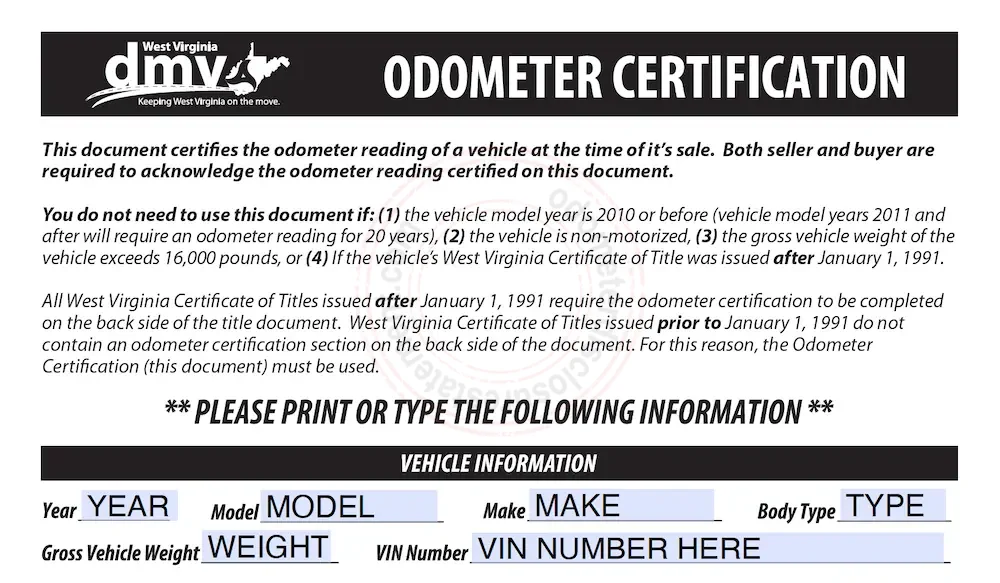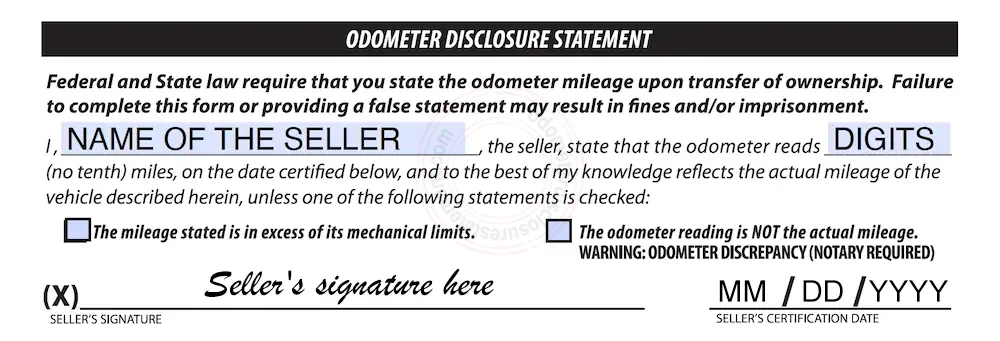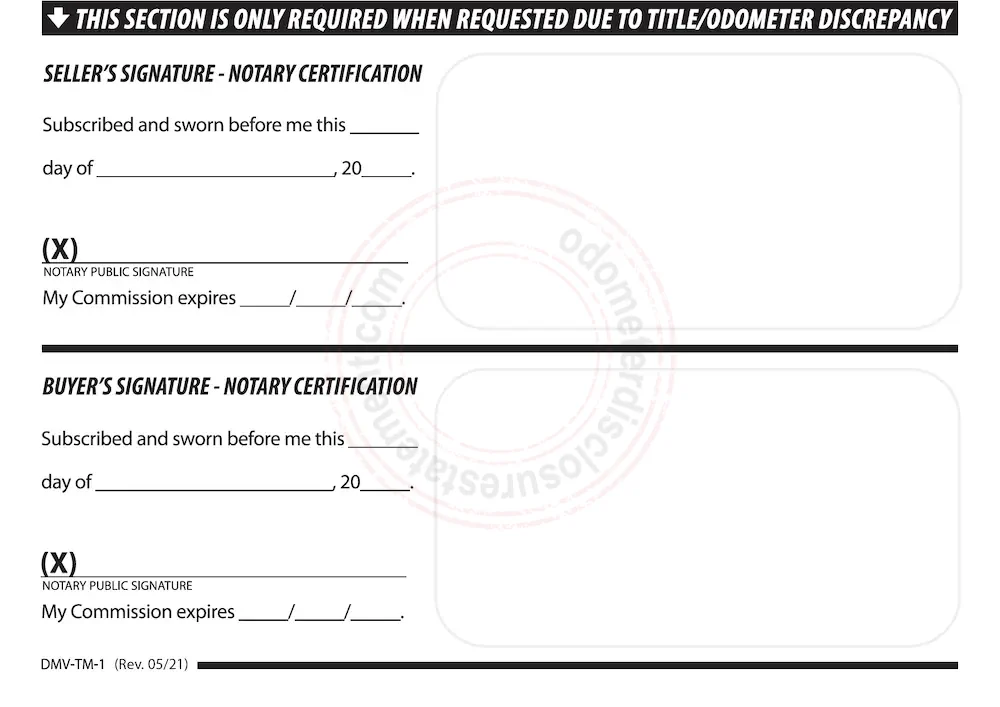When you transfer a vehicle in the State of West Virginia you have to complete the odometer reading in the Assignment of Certificate of Title section found on the back of the title for any vehicle that is a model year 2011 or newer, below 16,000 pounds, and self-propelled. The State of West Virginia has specific legal requirements about what the Odometer Disclosure Statement form must contain and how to fill it out. Check below for more details and for the separate form.
In the State of West Virginia the following vehicles are exempt from odometer reading: vehicles model year 2010 or older, vehicles over 16,000 pounds, non-motorized vehicles (trailer-type), low-speed vehicles (LSV), mopeds, and scooters.
Recording mileage history helps legal authorities to detect and verify odometer manipulation like rolling back a vehicle’s mileage.
West Virginia Odometer Disclosure Statement Form
Below you can find the West Virginia state-approved fillable PDF form for your use.
The West Virginia Odometer Disclosure Statement separate form is composed of five sections. Below I’ll explain how to complete this form:
Section 1
The first section includes the vehicle information details. So fill out these details – Year, Model, Make, Body type, Gross Vehicle Weight, and VIN Number:

Section 2
The second section includes the seller’s information. Complete the full name of the seller. Particularly the name must be PRINTED – this means to use only Capital Letters to write SELLER’S NAME. Next fill out seller’s full address:

Section 3:
The third section represents the Odometer Disclosure Statement and includes the full name of the seller. Please note that the name must be PRINTED – this means to use only Capital Letters to write SELLER’S NAME. Then fill out the odometer reading (use only digits without tenths), seller’s signature and date. If the odometer reading is in Excess of its Mechanical Limits or is NOT the Actual Mileage Reading please check the corresponding box:

Section 4:
The fourth section includes the Buyer Information and certification. So include here the full name of the buyer (the name must be PRINTED – this means to use only Capital Letters to write BUYER’S NAME) and full address:

Section 5:
The last fifth section is used only when a title or odometer discrepancy occurs and needs to be notarized:

In the State of West Virginia you may complete also the West Virginia Odometer Disclosure Statement Form – DMV-TM-1 (Rev. 05/21).
Moreover if you don’t know how to get an exact odometer reading you can find all the details here: Reading the Odometer – How to read an Odometer.
Tip: to complete the West Virginia Odometer Disclosure Statement Form on your device (computer / phone / tablet) open this PDF form in Adobe Acrobat Reader.
You can also fill out the form by hand. Also don’t forget to use a pen with blue or black ink and not a pencil!
How to fill out the West Virginia Odometer Disclosure Statement
When you fill out the odometer reading mileage in the Assignment of Certificate of Title section on the back of the vehicle’s Certificate of Title you need to fill out the following details. Use a pen with black or blue ink and not a pencil. Please don’t make any changes, alterations or erasures on the title because doing so will void the title! Also before you write on the title please read carefully first all the instructions.
First the seller fills out the sale price. Only if there is a trade in then fill out its value and the Net cost (sale price minus trade in).
Next the seller fills out PURCHASER’S / BUYER’S PRINTED NAME. Then fill out purchaser’s (buyer’s) address, city, state and ZIP code.
After that the seller certifies and fills out the current odometer reading as the actual mileage. Please use only digits without tenths. Only if the Odometer reading entered is in EXCESS of the odometer’s mechanical limits the seller may check the first check box. Or the seller may check the second check box only if the Odometer reading entered is NOT the actual mileage (Warning – Odometer Discrepancy).
After that the seller signs, fills out their PRINTED NAME(S), the sale price and date of sale. Fill out the name(s) of the seller exactly as it appears on the title. Only one seller must sign if the title states OR between owner names printed on the title. Both sellers must sign if the title states AND or AND/OR between owner names, or if nothing is listed between owner names.
Finally the buyer acknowledges the odometer certification made by the seller, signs and fills out their PRINTED NAME:

Advice for vehicle sellers in West Virginia
Furthermore since the buyer retains the original Odometer Disclosure Statement Form DMV-TM-1 we advice all the sellers to fill out and keep for their records an optional Federal Odometer Disclosure Statement.
Odometer Fraud in West Virginia
If you suspect you are a victim of odometer fraud and you cannot find a legal solution with the seller then you can File an Online Complaint with the Office of the WV Attorney General.
Find more information about the West Virginia Division of Motor Vehicles
For more information, in any case, go to West Virginia Division of Motor Vehicles.
Its mission is to provide essential motor vehicle and driver services, facilitate interstate travel by promoting reciprocity for West Virginia vehicles and drivers in other states. Particularly West Virginia DMV promotes highway safety, and collects revenue for highway maintenance and construction programs.